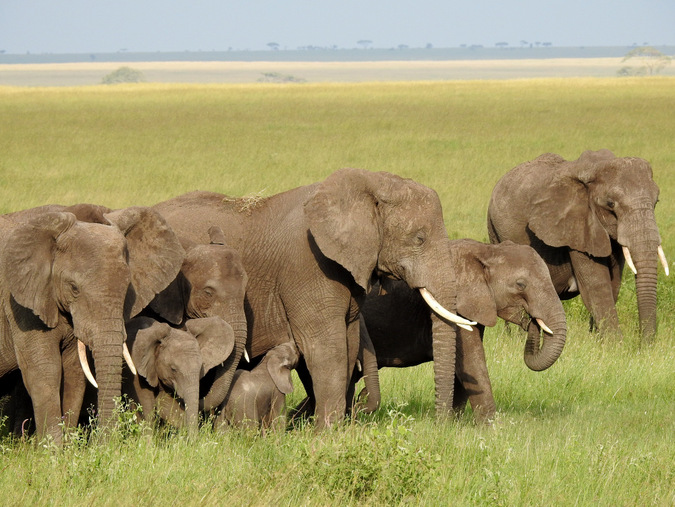
The name of the fabled Serengeti is derived from the Maa word siringet, which refers to a “place where the land runs forever”. Likewise, the Maasai Mara gets its name from the Maa word for “spotted,” in reference to the acacia thickets which are sprinkled across the savanna. Together, these regions of Tanzania and Kenya comprise the expansive Serengeti-Mara ecosystem, and it’s no coincidence that the Maasai people have identified these wildlife-rich habitats according to their physical features since time immemorial.
The rolling plains, winding serpentine waterways, and sparse-yet-mysterious riverine woodlands resonate deeply with something in the human spirit. They are the backdrop to an endless drama of predator and prey; in them, we glimpse something of the infinite struggle of man and nature – perhaps even something of our own origin. But these apparently timeless landscapes may not be as eternal and unchanging as they appear. In fact, they may have once looked quite different.
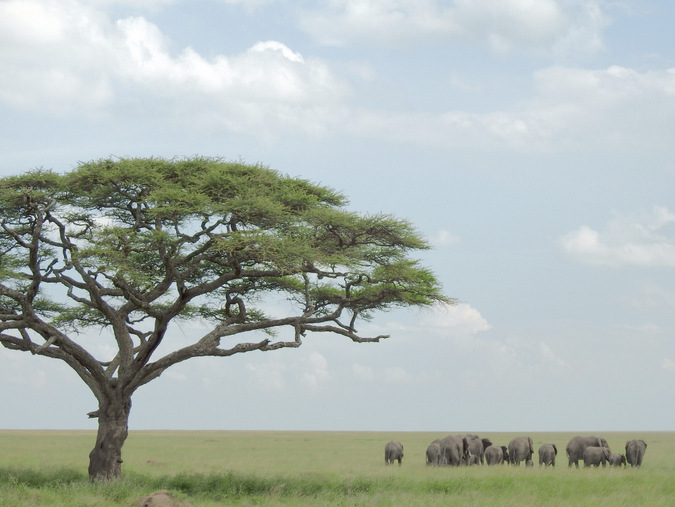
If you could step into the Maasai Mara of two hundred years ago, you’d be surprised at what you might see. Rather than driving across endless plains baking under a red African sun, you might stride beneath the dappled shade of a mature-growth forest of Acacia and Combretum. You might pick your way carefully amongst tangled thickets of Croton thornbush, hoping to avoid the very real possibility of stumbling across a leopard waiting out the heat of the day in the dense cover.
Unless you came to a break in the trees, you might not see the blue haze of the Oloololo Escarpment in the far distance, nor would you obtain an uninterrupted vista of the wild sprawl of the bush. You would be forgiven, in fact, for thinking that you were not in East Africa at all.
Researchers have been able to put this evocative picture together by extensively consulting the historical record: written journals, game wardens’ diaries, and hunters’ observations have all played their part. Scientists have also compared contemporary photographs with pictures of the same locations from previous decades, and they’ve used modern tools to determine the age of living trees.
Altogether, the Serengeti-Mara has been studied continuously since the 1950s, allowing us to extrapolate long-term trends that aren’t immediately apparent to visitors in this part of Africa.
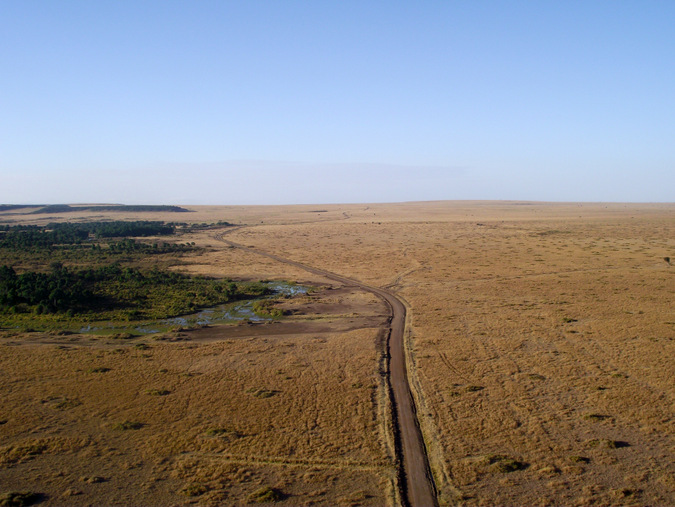
One expert on the subject is Dr Colin Beale, an ecologist with the University of York who specialises in spatial processes, from the seasonal movements of individual animals to the greater patterns of entire species.
Colin works with conservation organisations in order to assist with wildlife management policies. Although he’s quick to point out that reserve management decisions should be made by local authorities rather than foreign scientists, his insight is nonetheless an invaluable tool for anyone seeking to understand this complex ecosystem. And he’s seen plenty of complex relationships in the Maasai Mara.
“The grassland-woodland mosaic in the area has changed a lot over long periods of time,” he says, “and elephants, humans, fire, and climate all have a role to play in these changes.” In fact, his research has contributed to a growing body of work that demonstrates that woodland in the Maasai Mara has been in decline for more than a century, resulting in the grassland savanna we know so well. But the reasons for this decline in woodland are manifold.
As Colin suggests, fire is one of the biggest drivers of change – and it’s tied inextricably to human activity. Fires in the Mara are not typically the result of lightning strikes; instead, most are set by Maasai pastoralists.
The fires are used to burn away grass and bush, stimulating a new flush of fresh grass for the purpose of livestock grazing. Other fires are set by reserve authorities under the impetus of park management plans. It’s not uncommon for a given area to be burned in this manner two or even three times per year. Naturally, this repeated activity has a significant impact on the environment, eliminating trees and encouraging the dominance of grassland. Some research even suggests that only fire can change an ecosystem from forest to grassland, though other forces are capable of suppressing new growth and keeping an environment locked into a grassland stage.
So while fire is a major agent of change, it’s not the only contributing factor.

Petter Granli is the president and co-founder of ElephantVoices, a scientific organisation that studies elephant cognition, communication, and social behaviour. With more than 40 years of field research under its belt, the organisation has been able to assist with the management of wild elephant populations by providing important information to the authorities of African reserves – including the Maasai Mara.
Petter was kind enough to lend me some further insight into a few of the challenges facing the Mara’s ecosystem.
“Firewood collection deeper and deeper into the reserve [and] more and more cattle grazing deeper and deeper into the reserve are some of the main ones during recent times,” he says. He also points to research showing that a century’s worth of a deliberate bush-clearing, as part of efforts to eliminate the tsetse fly, has further reduced the reserve’s woodland. These elements have all had a hand in the environment’s gradual loss of forest cover and in the rising prevalence of grassland, and they aren’t going away anytime soon.
With all of these forces exerting sustained pressure on the environment, it’s clear that the gradual transformation of the Mara is an incredibly complicated process with many moving parts. It also seems increasingly likely that humanity may ultimately be the most influential agent of change in the environment; the work of ElephantVoices and other organisations operating in the region has allowed us to realise a greater understanding of our own impact upon places like the Mara.
But even as recently as the 1960s, elephants were being singled out as the primary cause for the destruction of the environment’s mature woodlands. There were even calls for the elephants to be culled in an effort to reduce their impact on the ecosystem, as has been performed in other African countries. But could the situation ever really call for a solution this drastic?

To a certain extent, it’s difficult to imagine that elephants could even be capable of transforming their environment so dramatically. My first encounter with these titans of the Mara occurred some six years ago, in the Paradise Plain in the west of the reserve.
It was a sultry mid-afternoon in August, and most of the plains game were resting languidly, waiting for the heat of the day to subside. It was a pleasant surprise, then, to see a line of three bull elephants emerging from a stand of Commiphora along the riverbank. Each of these bachelors strode confidently abreast of the elephant next to it, and the leftmost amongst them was a real tusker, with incisors big enough to discourage even the most enterprising of adolescent challengers.
But any sense of latent danger was suppressed by the cool, self-assured manner in which the elephants approached the Land Rover. The foremost elephant even advanced to within a few feet of us, extending its trunk to see what could be learned from our scent. Either the elephant was quickly satisfied or we weren’t especially interesting, as it wasn’t long before the three companions ambled past us and into the distant grasses beyond. Yes, it was hard to imagine these gentle giants as a destructive force of nature – but only to a certain extent.
If you’ve ever had the pleasure of seeing a very hungry elephant – or a very determined one – you’ll already appreciate the way in which these animals can easily dig a succulent root from the ground, knock over an acacia, or strip the bark from a baobab. I have personally seen baobab specimens that were virtually destroyed by elephants, as the big animals had been desperate to access the spongy, palatable vegetable matter inside the trunk and had caused heavy damage to the huge trees.

And if trees are already damaged by fire, elephants breaking their branches and removing their bark can make them less likely to recover fully. So perhaps it’s not quite so surprising to learn that herds of elephants can, over a period of years, begin to have an effect on the makeup of vegetation in an ecosystem like the Serengeti-Mara.
While the extent of this impact is hotly debated, most experts do agree that elephants can at least have some influence on their environment. But does that necessarily mean that elephants are engaged in destructive deforestation? Or are they just benevolent gardeners?
To learn more, I spoke with Ethan Kinsey, a professional safari guide who also happens to be an ecologist specialising in biodiversity conservation and management.
When asked whether elephants can be considered a destructive force of nature, Ethan raises a provocative point. “The term ‘destruction’ is a judgement based on how we think something should be,” he says. The handiwork of elephants might be shocking to human observers: pushed over and debarked trees, or a loss of trees in certain areas altogether. But this might represent a natural process rather than a catastrophe.
“I much prefer to think of elephants as ecosystem engineers,” Ethan muses, recognising that the big animals are “essential in terms of seed dispersal, encouraging new growth, and opening up woodlands for grasslands, which then serve a different guild of species.”
In other words, the environment of a wilderness like the Maasai Mara would be poorer in both floral and faunal diversity without the influence of elephants. To the extent that elephants might ever place too much pressure on their environment, he suggests that this would actually be a result of human encroachment. If elephants don’t have the freedom and safety to traverse their traditional migration routes, they can be pushed into smaller areas, where their population builds up into unnatural concentrations and begins to have an effect on the ecosystem.
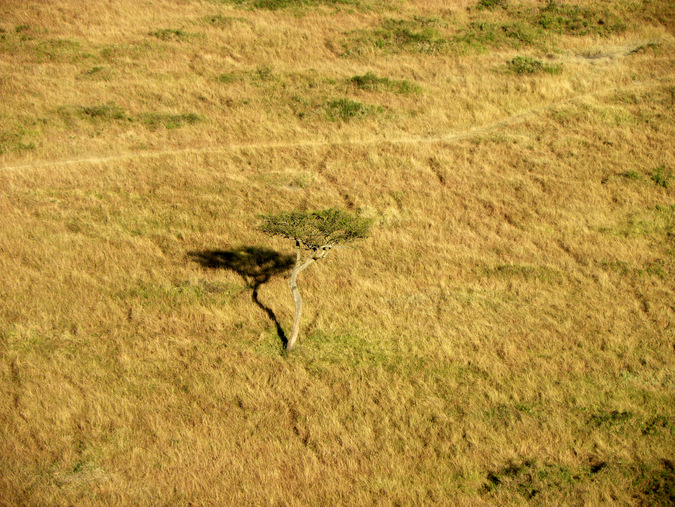
Petter Granli and his team at ElephantVoices have also observed this phenomenon in the Mara.
“In recent years, fencing has become a major threat to the ecosystem – with elephants being only one species seriously affected,” he cautions. If development continues unchecked without the establishment of sufficient migration corridors, the Mara’s elephants will be boxed into a smaller space and may begin to more seriously damage their habitat. This trend has accelerated over time, corresponding with a general increase in human pressure.
The problem has also been exacerbated by Kenya’s privatisation of previously-communal grazing land; pastoralists are increasingly forced to allow their livestock to graze in prime wildlife habitat, which further degrades its ability to sustain a wide variety of species.
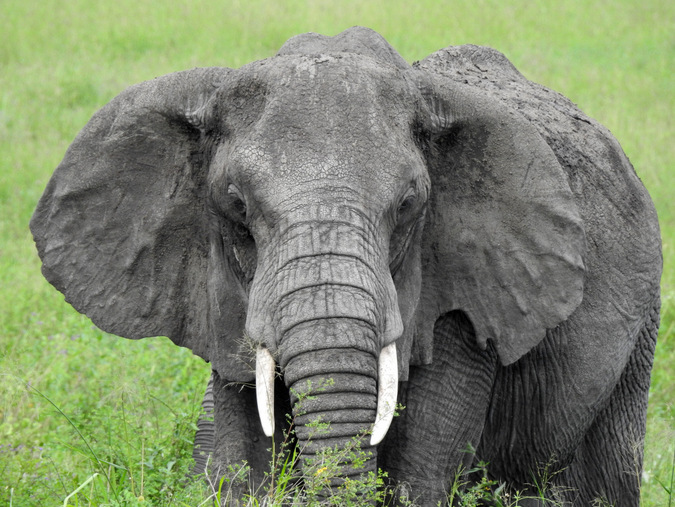
However, it’s important not to let short-term trends dictate the course of conservation efforts, either; all too often, the long-term picture remains unclear. Ecosystems like the Serengeti-Mara experience natural fluctuations and cycles of vegetation; change is quite literally the only constant in the natural world. Managers of game lands might therefore expect to see some waxing and waning of animal populations, as well as plant demographics.
For example, certain parts of the Mara have even experienced a renewed expansion of woodlands as recently as the 1930s and 1940s. And with hundreds of elephants migrating into the Serengeti to escape poaching pressure in the Mara over the last 15 years, we may continue to see changes in the ecosystem’s landscape as the elephant population alters its distribution. That’s why it’s so important to avoid knee-jerk reactions to the appearance of trends like a decline in woodland habitat.
Ethan puts it succinctly: “Savannas do not have a single climax state and are in a constant state of flux.”
He recommends managing a reserve like the Mara for the diversity of habitat, which will naturally result in a healthy diversity of species. This approach will best reward both the animals who live in the habitat and the people who come to see them.
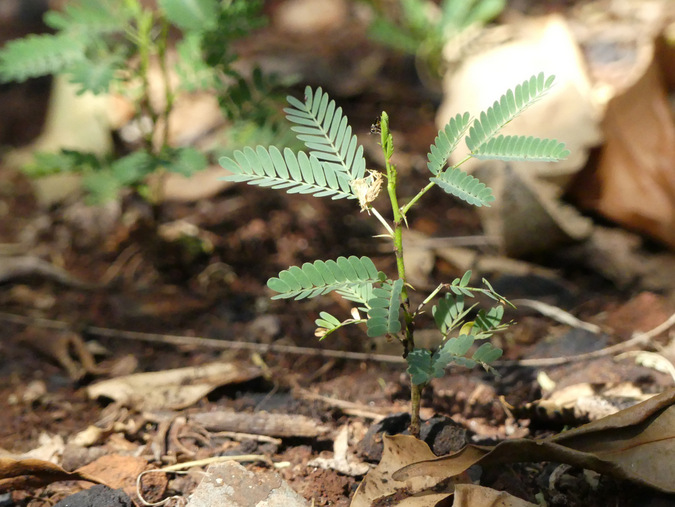
But as Colin Beale reminds us, the responsibility to manage wild habitats like the Maasai Mara ultimately rests with local people. They will be the ones to decide which species to prioritise and what constitutes the ideal habitat for those species. And one Kenyan organisation is already making exciting progress in reforesting the country’s wild places.
“We are wholly owned, self-financed, and operated in Kenya,” says Teddy Kinyanjui, Sustainability Director for Seedballs Kenya. This is an exciting initiative that packages the seeds of indigenous plants – mostly trees – inside small balls of charcoal dust.
These “seedballs” are sold at affordable prices and can simply be tossed into vacant property or distributed aerially over wide tracts of land. The charcoal coating protects the vulnerable seeds from predation and extreme temperatures until they can successfully germinate and take root. While the seedballs are meant to be used all over the country in order to increase forest cover, they’re especially useful in places like the Maasai Mara. That’s why the group has partnered with a number of different conservation organisations.
“All of our Re-Green partners are either companies or individuals who have bought seedballs from us or our conservation partners, with whom we have set up a direct donation portal,” Teddy explains. “People from anywhere in the world can send seedballs to them for distribution and follow-up.”
Some of their partners include the Big Life Foundation, Lion Guardians, and the Mara Elephant Project. These organisations work with Seedballs Kenya to plant olive trees, African cedar trees, nine different Acacia species, and two types of grass in the Serengeti-Mara ecosystem. These species are critical in elephant habitats like the Mara, and this novel method of protecting Kenya’s biodiversity is exactly the sort of ingenuity needed to complement traditional conservation efforts in the country.
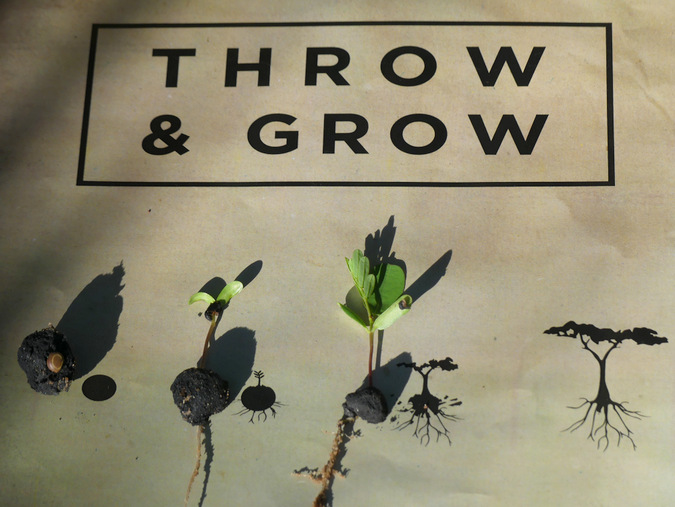
Will this be enough to ensure that there is always a place for elephants in East Africa, as well as the habitat necessary to support them?
Just as many forces have shaped the Serengeti-Mara into the ecosystem we recognise today, many forces must come together in order to ensure that the environment remains populated with these charismatic animals, as well as other denizens of the bush. Conservation organisations, government agencies, safari tourists, and regular people all have a part to play in this collaborative endeavour.
But in order to know where you’re going, it helps to know where you’ve started. Understanding the ecological history of places like the Maasai Mara will generate greater recognition of what these reserves require to thrive in the future.
For my own part, I plan to return to the Mara in just a few months. Thanks to the efforts of organisations like ElephantVoices and Seedballs Kenya, as well as the research of scientists like Colin Beale and Ethan Kinsey, I know that I’ll find elephants there. With a lot of hard work and a little luck, I hope that this may always be the case.
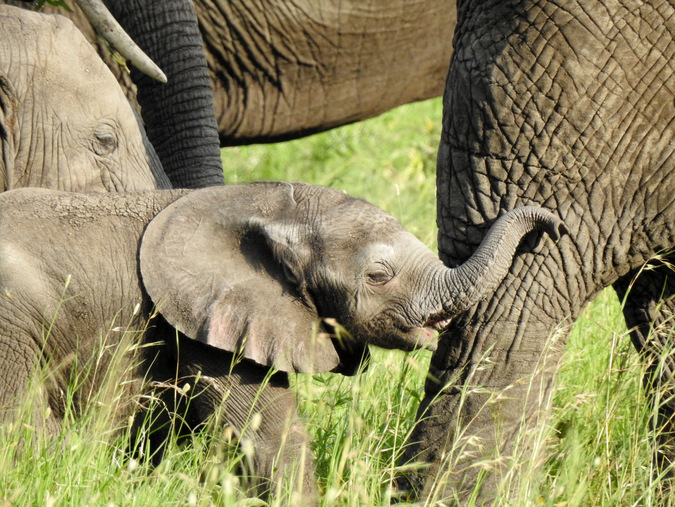
To comment on this story: Login (or sign up) to our app here - it's a troll-free safe place 🙂.![]()






